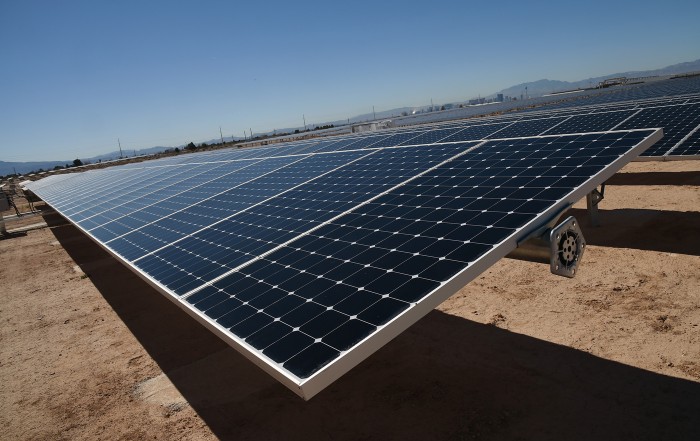Renewables Are Booming—but Buyer Beware
A new report from the U.S. Department of Energy suggests that the costs of renewable technologies are tumbling, and with it their adoptions soaring. But despite the good news, we can’t become complacent.
“Decades of investments by the federal government and industry in five key clean-energy technologies are making an impact today,” the report explains. “The cost of land-based wind power, utility and distributed photovoltaic solar power, light-emitting diodes, and electric vehicles has fallen by 41 percent to as high as 94 percent since 2008.”
As a result, adoption of these technologies has skyrocketed. Onshore wind power capacity grew by 12 percent in 2015. In fact, it accounted for 41 percent of all new generating capacity installed in the U.S. last year. The story is similar, though on a smaller scale, for solar.

Perhaps the most impressive of all the numbers is the huge surge in the adoption of LED lighting, with the number of domestic installations more than doubling in 2015.
These are all good signs. Only through dramatic changes to our energy generation infrastructure do we stand any chance of meeting the goals laid out in the Paris climate accord to reduce the effects of warming on our planet. But plummeting costs and a couple of years of swift adoption are not necessarily enough to save us from ourselves.
As our recent analysis of the Texas wind boom explains, a rush isn’t necessarily a predictor of sustainable success. Yes, if Texas were a country it would be the sixth-largest generator of wind power in the world. But that achievement hints at the limits of renewable energy as well as the possibilities. Texas has invested heavily in updating its energy transmission system and is blessed with strong, consistent winds. The rest of the country will find such adoption more difficult.
As for falling costs, there has been speculation that our solar boom, in particular, may in fact be more of a bubble. While prices for the installation of solar have indeed continued to decline, that may only have been made possible by government subsidies propping up the entire ecosystem. Many states have been considering the withdrawal of net metering payments—the process through which solar owners recoup money for pumping electricity into the grid. Such moves could potentially upend the solar market’s success.
So it is indeed heartening that costs of renewable technology are falling and their adoption commensurately rising. But we mustn't lose sight of the long, hard slog yet required to ensure that such change is sustainable.
(Read more: Revolution … Now, “Suddenly, the Solar Boom Is Starting to Look like a Bubble,” “Battles Over Net Metering Cloud the Future of Rooftop Solar,” “The One and Only Texas Wind Boom”)
Keep Reading
Most Popular
Large language models can do jaw-dropping things. But nobody knows exactly why.
And that's a problem. Figuring it out is one of the biggest scientific puzzles of our time and a crucial step towards controlling more powerful future models.
How scientists traced a mysterious covid case back to six toilets
When wastewater surveillance turns into a hunt for a single infected individual, the ethics get tricky.
The problem with plug-in hybrids? Their drivers.
Plug-in hybrids are often sold as a transition to EVs, but new data from Europe shows we’re still underestimating the emissions they produce.
Stay connected
Get the latest updates from
MIT Technology Review
Discover special offers, top stories, upcoming events, and more.